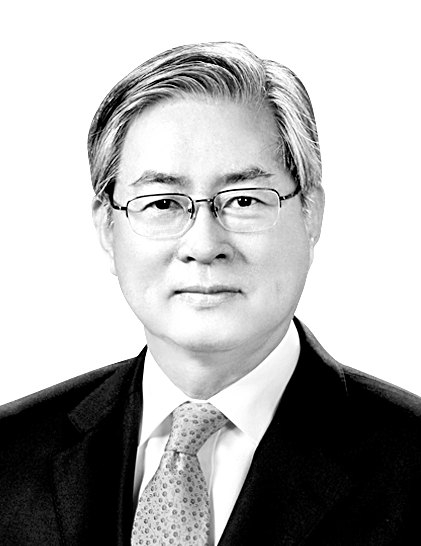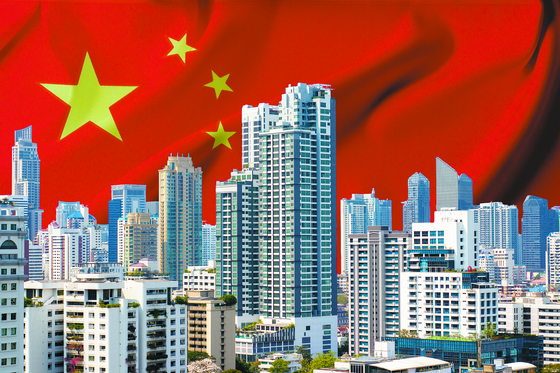China’s economy no ticking bomb

Kim Dong-won
The author is a former visiting professor at Korea University.
The most noticeable development in the 2023 global economy could be the surprising slowdown of the Chinese economy even after the pandemic. After the economy defied growing expectations that it would contribute to a global economic recovery, U.S. President Joe Biden compared it to “a ticking time bomb.” But Chinese Premier Lee Qiang refuted this. In early September, he was confident of “continuous and healthy development” of the Chinese economy. Who’s telling the truth anyway?
On May 9, 2016, the People’s Daily, the Communist Party’s mouthpiece, shocked the world by running a provocative commentary by an anonymous official warning about the danger of China’s debt-led growth and its inevitable L-shaped recovery. Since then, many Chinese officials have demanded vigilance against the three “gray rhinos” — shadow banking, excessive corporate debt and real estate bubbles. In his 2018 book “China’s Great Wall of Debt,” Dinny McMahon, a former Wall Street Journal correspondent to Beijing, pointed to the growing risks of an economy over-relying on the housing market, warning against the danger of a black swan — the Chinese economy — engulfing the global economy.
To tell the truth, Chinese developers oversupplied apartments and houses by a whopping 30 to 50 percent between 2018 and 2021. Due to their poor sales from too high prices compared to homebuyers’ disposable income, the developers started to suffer a liquidity crisis and couldn’t repay their loans from banks. The Chinese government tried to cool the overheated property market by sharply tightening housing finance in August 2020. But local governments could not downscale their sales of land use rights, as they accounted for up to 50 percent of their fiscal revenue. They continued housing development to deepen the oversupply.
Between 2010 and 2019, the average annualized growth rate of advanced economies was two percent, while China’s was 7.7 percent. The remarkable disparity was possible thanks to the accumulation of China’s fixed capital amounting to 44 percent of its average GDP from 2008 to 2021. Above all, most of China’s infrastructure investments were debt-financed.
For instance, the ratio of China’s non-banking-sector liabilities against GDP gradually increased from 126 percent in 2001 to 178.4 percent in 2011, but the figure soared to 297 percent in 2012. It suggests the critical role of the three gray rhinos in driving the growth of China’s economy while advanced economies suffered a recession after the 2008 global financial crisis.
Following property behemoth Hengda’s default in September 2021, China’s largest developer Biguiyuan, or Country Garden, is still in crisis, as hinted at by its deferred interest payments in August for its U.S. dollar-denominated bonds — and its nine cases of principal dues in September alone. Among the top 50 Chinese developers who issued dollar-denominated bonds, 34 demanded a deferment of their principal payment, which in turn forced market prices of their bonds to fall to 67 percent of their face value.
Meanwhile, China’s trust companies and private bankers were intricately linked to property developers and local government financing vehicles (LGFVs) by bomb fuses that can blow them up anytime. The number of LGFVs incapable of repaying debts from their issuance of commercial papers surged to 48 in July from 12 in the same month of last year.

China’s Ministry of Finance said that LGFVs’ unpaid debt stood at 37 trillion yuan ($5 trillion) as of April this year, but the International Monetary Fund (IMF) projected the amount at 66 trillion yuan in February. After some of the 31 provinces, metropolitan cities and autonomous regions exposed their alarming debt level in the first half, Beijing ordered them to issue “special bonds” to pay back their LGFV’s debt. The Bank of China admitted to defaults of LGFVs in some local governments and the worsening condition of their assets.
Despite such extraordinary troubles, including in the real estate sector, no time bomb is ticking for the Chinese economy. Here’s why.
First, the “shadow banking” through LGFVs and trust companies is de facto semi-institutional financing managed by local governments and controlled by state-run banks. Second, the IMF did not categorize the alarming developments in China’s real estate market as a “crisis” in its regular report in February, and instead assessed that the central government can bring them under control. Third, despite the high debt ratio in the non-banking sector, up to 95 percent of China’s debt is held by the Chinese, including domestic financial companies. Fourth, as Beijing already deposited cash ammunition amounting to a third of the GDP in the banking system, it can supply sufficient liquidities to the market in times of crisis. Fifth, even the risky developments are taking place within the boundaries of Beijing’s guidelines on restructuring the real estate industry.
The view of the Chinese economy as a ticking bomb is based on the perspective of the market economy. China certainly has problems with shadow banking, but its institutional banking sector is still sound. Given the government’s superb ability to adjust market players, in particular, a liquidity crisis from the shadow banking will not likely spread to the entire financial system, not to mention China’s economic system.
Simply put, a global financial crisis like the one triggered by Lehman Brothers in 2008 will not occur in China. To spur domestic demand for China’s economy, the urgent job for Beijing is to address the frozen property market. But the government is not rushing to present countermeasures right away as it worries about the possibility of additional liquidities flowing back to LGFVs to form bigger bubbles in the property market.
China announced a plan to double its 2020 GDP by 2035, which requires an average 5 percent growth each year. But a more fundamental problem of the economy is that it can no longer keep up the 5 percent growth based on the current economic system led by the government, supply and investment.
Revitalizing an economy calls for systemic reforms. But China would hardly take that path, as it will lose its control over the economy if it were to turn to an economy driven by the private sector, demand and consumption. The socialist frame will collapse in the process, too. In the face of a critical choice between maintaining an economic system sustained by political ideology and elevating economic efficiency, Beijing will not yield its political control of the economy because of economic problems of this magnitude.
Therefore, the Chinese government will fix the chaos through limited financial assistance and partial deregulation to help restore public confidence. In other words, Beijing will take the path of low growth with the risks of the three rhinos continuing, while trying to resolve the crisis in the real estate sector.
Bloomberg has lowered its projection for China’s average annual growth rate to 4.5 percent from 5.0 percent between 2023 and 2028 and the figure between 2029 and 2035 to 3.3 percent from 3.9 percent. If the long-term growth rate of China — whose share in the global GDP is 18 percent — falls, the world’s long-term growth rate will inevitably fall as well.
The two percent potential growth rate of Korea cannot avoid an additional drop if the Chinese economy slows down. If China’s growth rate declines by 0.5 percentage points, Korea’s is anticipated to fall by 0.05 percentage points. To withstand the shocks from the slowed growth of China, Korea must draw up a new growth strategy by drastically lowering its reliance on China-centered supply chains, finding effective alternative routes, and diversifying export markets overseas before it is too late.
Translation by the Korea JoongAng Daily staff.










with the Korea JoongAng Daily
To write comments, please log in to one of the accounts.
Standards Board Policy (0/250자)